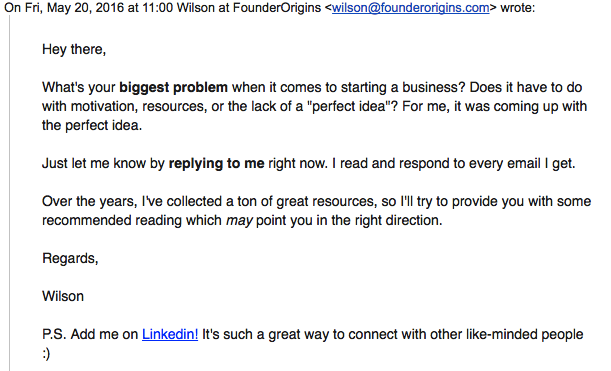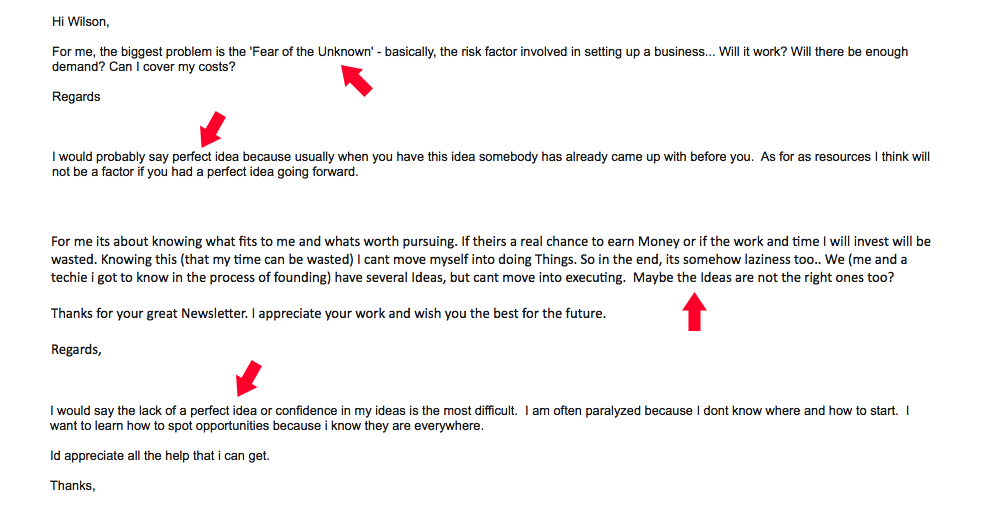We’ve talked a lot about strategies for businesses to get leads and sales from content marketing — in particular, from blog traffic.
But there’s a foundation under all of our strategies we haven’t yet discussed…
Engagement.
For example, to convert blog traffic into direct leads for enterprise sales teams, to get more sales of a subscription product after email optins, to get more email optins in the first place, you need an audience that’s engaged.
Engaged is defined as:
- They comment on all of your blog posts (not just 1 or 2 “nice article” comments, but substantive engagement)
- They click and open to your emails
- They reply to emails when asked so you can get into conversations and understand customer pain points
This engagement is the foundation of converting content marketing traffic into customers, and fans, of the company.
In this post we’ll share:
How we’ve managed to comments on every one of our posts, with some posts getting as many as 69 comments.
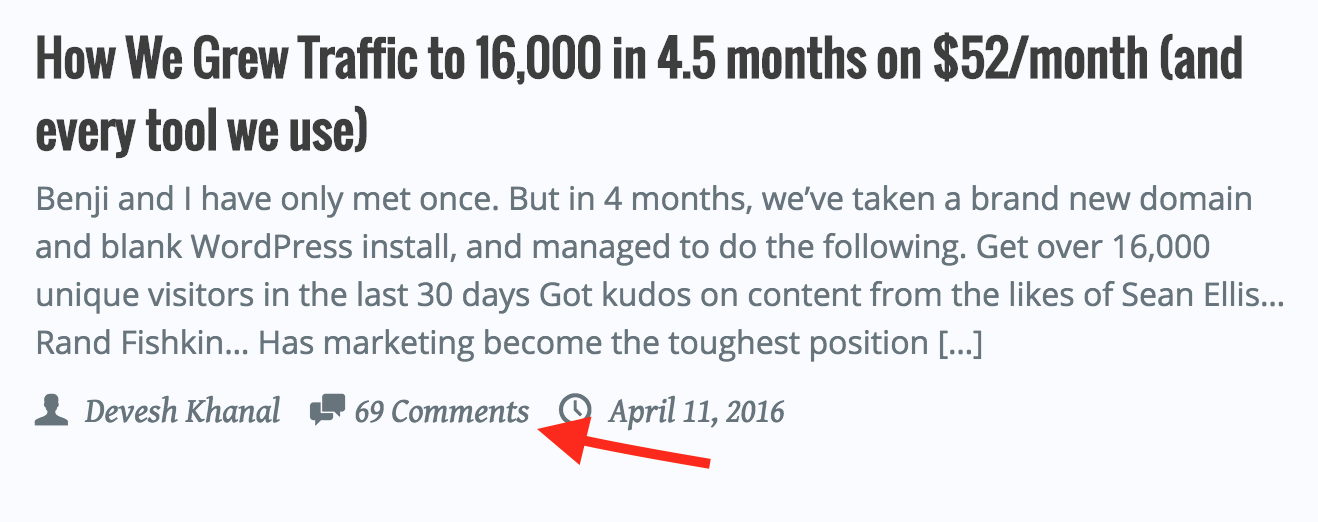
Get over 9% of our list to respond to our welcome email



Have 39.9% of our list open our emails and with 12.5% clicking through

And have a 4 star overall member rating in Mailchimp with over 2,000 subscribers and over five hundred 5 star members. For those that don’t know what this means… it means they’re really, really engaged.

What are we, and other companies, doing differently to achieve this high level of engagement with their readers?
Before we get into the specifics of what we actually do differently, I want to share this concept with you. It’ll help you understand the theory behind what we’re actually doing. Then below, I’ll give real examples of things that we and other companies do to achieve high comments, opens, clicks and shares.
Why You Need to Treat Your Audience Like Your Significant Other
Anyone who’s been in a relationship before knows that one-sided relationships never work out.
In order for a relationship to be successful, both sides need to allow their voice to be heard and show each other they care about one and other.
Your relationship with the readers of your blog are no different than the relationship with your significant other.
At the end of the day, on the other side of the screen, there’s a human. A human that’s looking to be acknowledged and cared for.
Many times marketers try to market “at” people instead of trying to form a reciprocal relationship with them.
If you’re not getting comments on your blog, if you’re not getting as many opens, clicks or replies to your emails as you’d like, and if people don’t share your content… take a step back and audit what you’re doing.
Are you acknowledging your readers?
Are you trying to understand and relate to your audience?
Are you asking for their opinion and feedback?
Or are you just pushing your opinion onto your readership and not acknowledging that they exist?
Here’s what we do differently to connect with our audience.
For Us, Engagement All Starts With A Simple Welcome Email
When someone signs up for your email list, it’s like the reader saying that they’re willing to go on a second date with you.
They’ve read your content, liked what they’ve seen, and now they want a little bit more.
Many people make the mistake of not sending something to their audience once they’ve opted in for an email list.
That’s like someone that you really like saying “I want to go on a second date with you” and you flat out ignore them.
When someone opts in to your email list, you should take the time to create a welcome email that explains a little bit about you, but most importantly gives your readers an opportunity to respond to you and tell you a little bit about themselves.
That last part is critical, it immediately begins a reciprocal relationship with your readers, the moment they join your email list.
By doing this, your email list becomes a list of your most engaged fans.
The goal of our blog is to help marketers inside of companies grow site traffic and convert their traffic into paying customers – for whatever the product or service is that they’re selling.
The way that we connect with our audience is by sending a welcome email that asks one simple question:
What is your #1 content marketing obstacle?
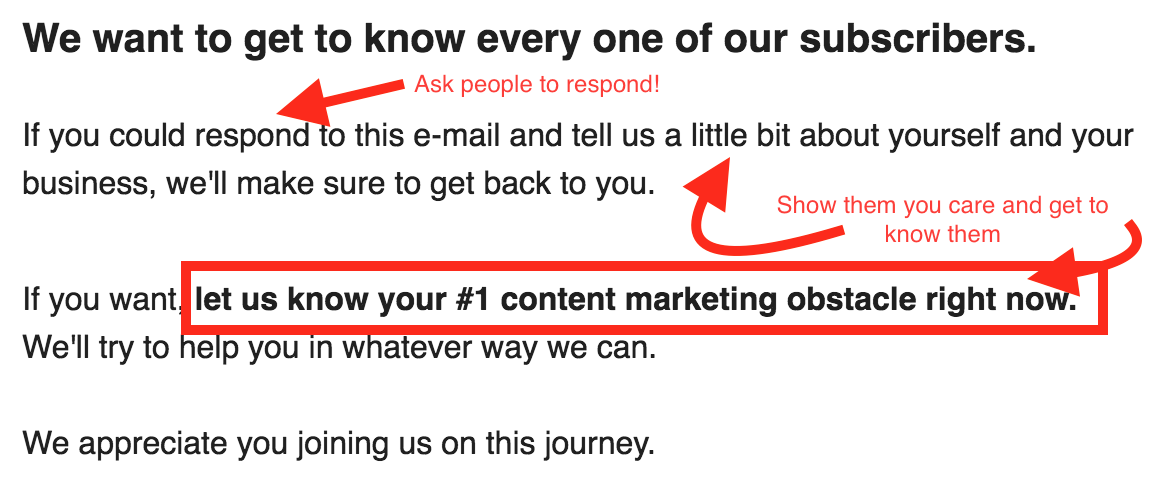
This does two things to the psyche of the reader:
- It let’s our readers know that we care about them
- It opens the door for two-way communication with our audience
Other benefits we get by doing this:
- We get to learn about the challenges our readers have so that we can write content that is specific to their pain points.
- We get to know our audience demographics. When people introduce themselves, they typically tell us who they are, what company they work for and what they’re up to.
- We get to form a relationship with our readers right from the beginning, and because we do that, people are more likely to comment and engage with our posts down the road because they know the relationship isn’t one sided. If they take the time to comment or share our stuff, we’ll respond.
By using this process, it becomes a win-win for everyone. People get help, we get to learn, and we form a mutual beneficial relationship with our audience.
Let’s see our welcome email in action:
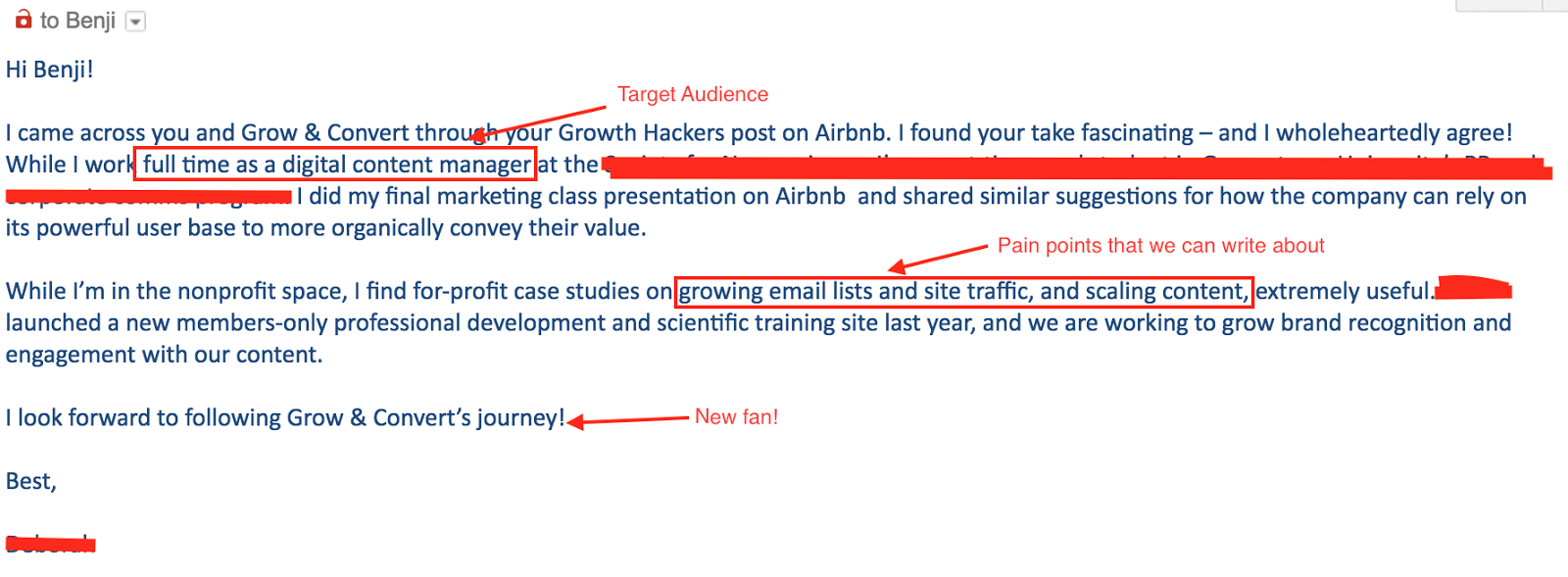
And the key is to make sure you respond to every email.
We’re not the only ones that do this either, here’s a look at Wilson Hung’s welcome e-mail over at Founder Origins:
He’s trying to help first time business owners be successful. He leads with the question that he’s looking to get answered, relates to the audience to make them feel comfortable sharing, and lets them know that he’ll respond. He promises value from taking the time to respond.
Here are some of the responses he gets from his welcome email:
Imagine getting emails like this every week and ending up with hundreds of these emails that have:
- A detailed list of users pain points described in their own words.
- Engaged fans of the company (or at least its blog) that you can email back to get feedback on new product ideas, etc.
Many companies pay tens of thousands of dollars for expensive consultants to do a 4 week project and return these exact same deliverables.
If you’re managing content marketing and can, in a few months (or weeks depending on traffic) show the CEO and executive team a categorized list of this user feedback, how valuable would that be?
Actively Engage People That Share Your Content On Social Media
Step two in this process is to actively engage people when they share your content. Every single person that shares our content via Twitter gets a manual favorite, and when I have time a comment too.
Why do we do this?
It shows people that we’re acknowledging them and appreciating that they’ve done something for us.
So the next time they come across a post that they like of ours, they’re more likely to share it because they know it won’t go unnoticed.
In fact, as I was writing this post, I started testing out GIFs as a way to increase engagement on Twitter when someone shared our content.
@nvdhulsbeek @SumoMe Thanks for sharing Nick pic.twitter.com/pwLAtvAPCR
— Grow & Convert (@growandconvert) May 20, 2016
And look what happened.
@ctmoore91 Sorry, we’ve failed you… pic.twitter.com/kVU9sDqkdK
— Grow & Convert (@growandconvert) May 20, 2016
Chris noticed that I sent a Giffy to someone else.
So I tried my best to make amends to him.
@ctmoore91 Can we still be friends? pic.twitter.com/Uqd8j5sUjX
— Grow & Convert (@growandconvert) May 20, 2016
@growandconvert I suppose so… ???? pic.twitter.com/y2Fie5iYJm
— Chris Moore (@ctmoore91) May 20, 2016
And now we’re friends again. From the looks of it, this was the first time that Chris had ever engaged with us, and because we took the time to respond to him and communicate with him, he’ll likely come visit our site again. (Chris if you’re reading this… please let us know in the comments)
While it takes a little extra time to respond and favorite everyone’s share on Twitter, the extra effort goes a long way.
It shows people that there are humans behind your brand and that your brand also has personality. When people see this, they’re more likely to engage with you because these days, sadly it’s outside the norm.
Implementing this one should be a no excuse implementation since there’s already someone running social media.
Encourage Conversation When You Share Via Social Or On Communities
When you promote your content in Facebook groups, LinkedIn Groups, or on communities, don’t just dump a link there. Relate to your audience, tell a story and encourage conversation.
Here’s an example of a post we did that got 30 likes and 6 comments from one share in a Facebook group.
The formula for social media engagement:
- Relate to your audience
- Tell some sort of story
- Encourage conversation
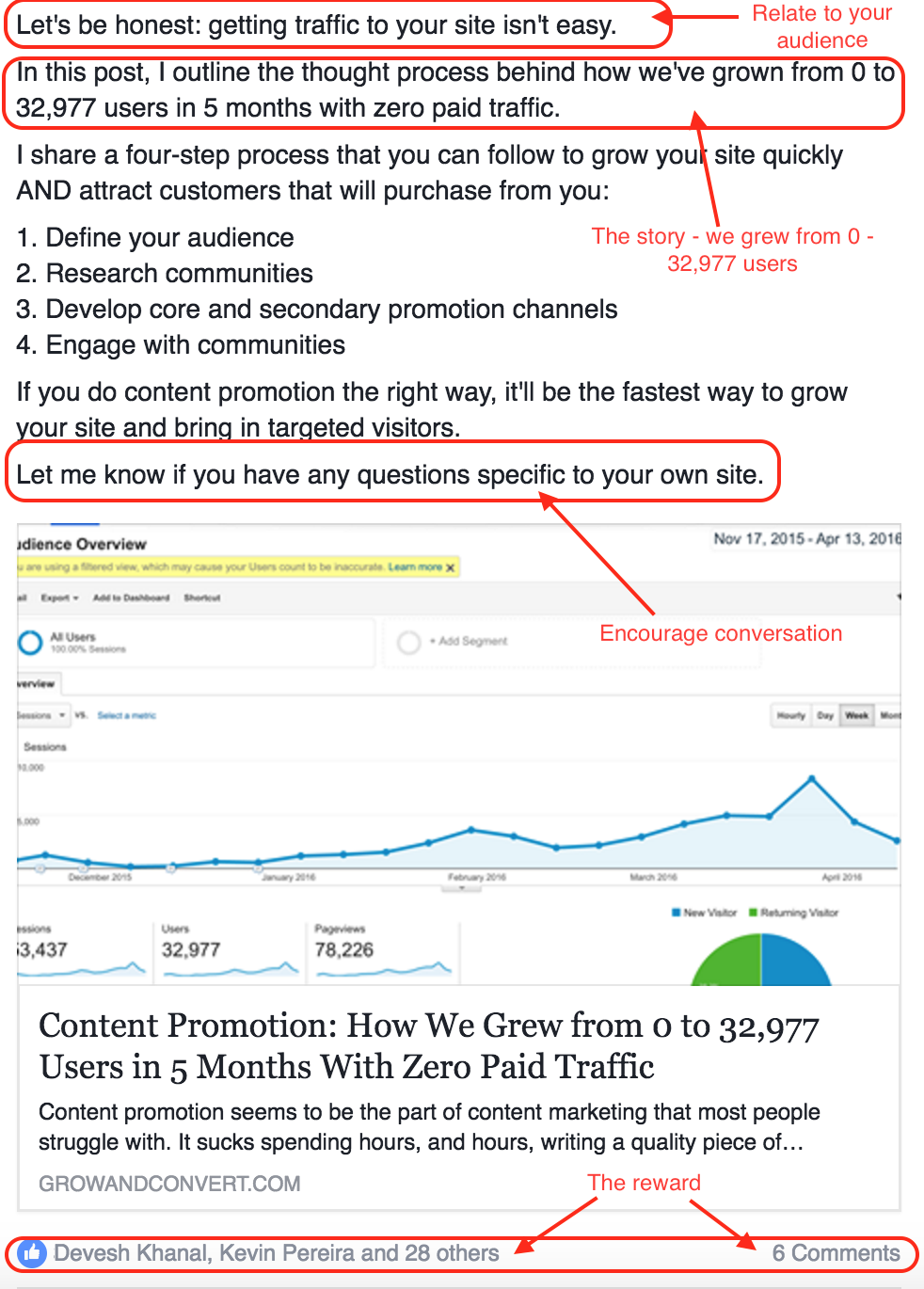
The same is true when you share your content on communities. You always want to try to relate to the audience and encourage conversation.
Here’s an example post I did on Inbound:
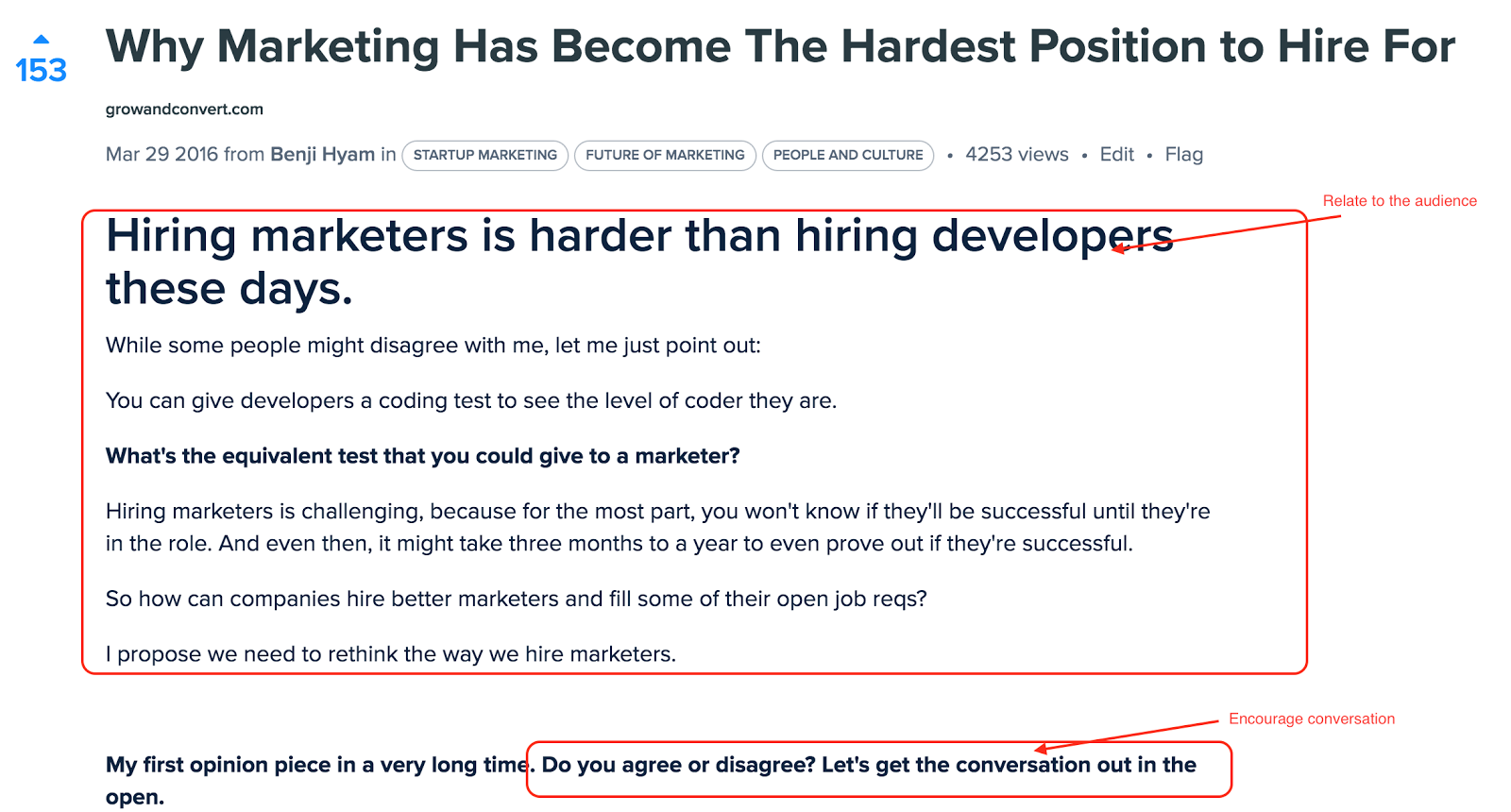
And the reward is 4,253 views on the post and 43 comments
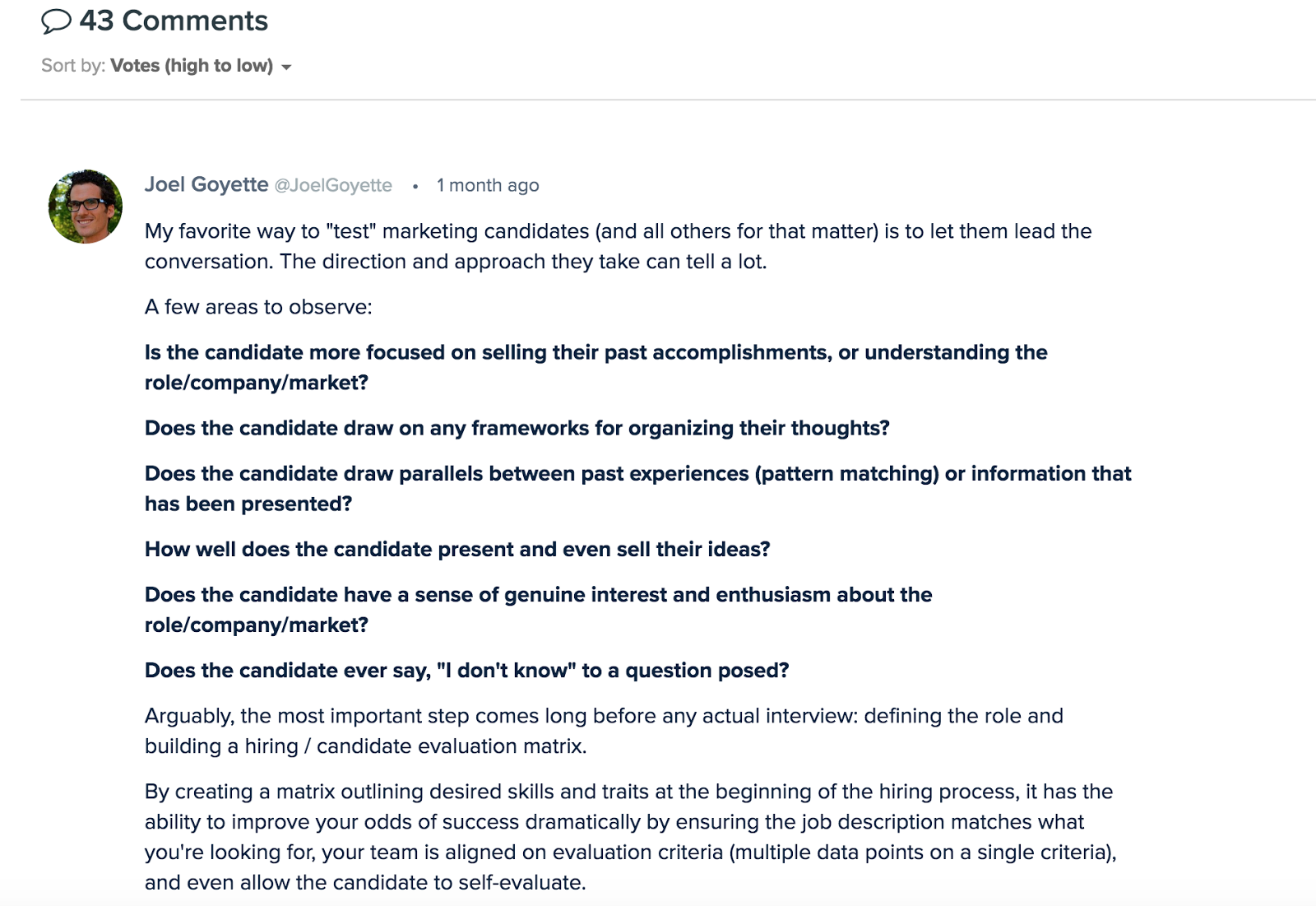
Again, the reason this works well is because so many people these days don’t take the extra 5-10 minutes to try to relate to their audience when sharing their content. They typically hop in a community and share their content to try to drive traffic instead of trying to help the people in the community.
If you put others first, the likes, shares, comments and traffic will follow!
The (Not So) Secret Strategy Behind It All… Be Human!
To simplify everything that I’m talking about into one core concept, it would be that the strategy behind engagement is to be human.
Sometimes as companies we forget that we don’t need to “act like a brand”, “speak in corporate tone”, and communicate like robots.
If you’re currently communicating like a robot, you’re not tricking anyone. You’re only hurting your company by not being real.
Stop sounding so stale and lifeless.
Think about it for a second…
How frustrated do you get when you ask a company a question on social media and you get some canned response?
Or when you share feedback with a company and they say something like “We’re really trying to help, call us to talk more about it?”
They’re scared to be human and real, because they’re afraid people will uncover that there are humans behind their operation. Or even worse, not like their company and share publicly.
Reality check: If you take the opposite approach, it will only lead to people not liking your company more because you’re not honest with your prospects and customers.
Here’s probably the best example that I’ve come across of a company engaging with people in a real, human way. And so if you’re thinking: “My company could never do this”, think again, because you’re about to see A GOVERNMENT AGENCY take this approach.
A responds to SF Bart‘s tweet in a condescending way and look at how they handled the situation.
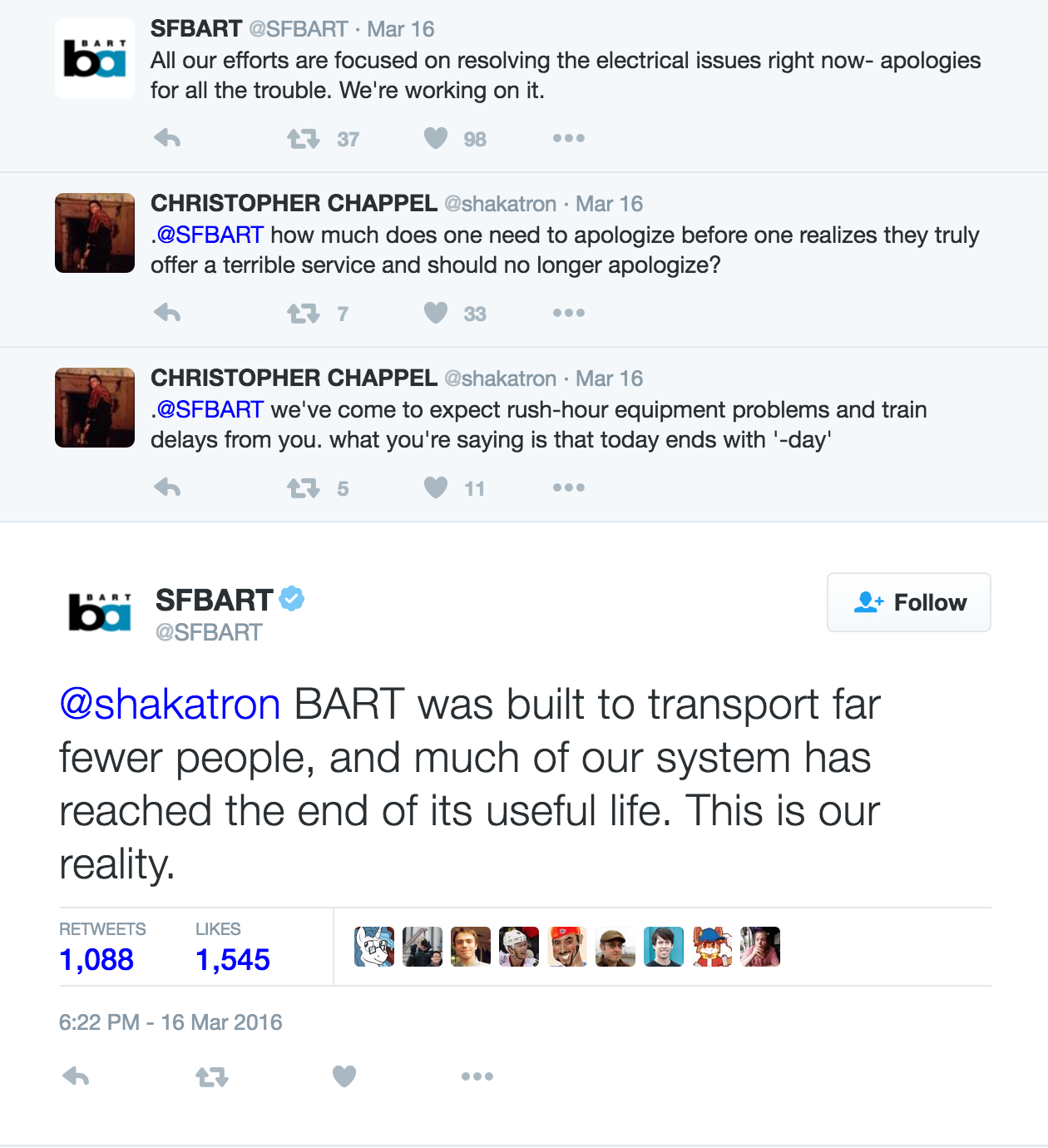
They could’ve answered with some generic response or not answered at all, but instead of doing that, they just chose to be human and honest, and look at the reaction it had.
If you want to read more about this, just check out the multiple press mentions they got for using this strategy:
BART gets candid in Twitter exchange with angry riders (SF Chronicle)
BART Talks Back: Agency’s Twitter Account Responds to User Complaints (NY Times)
While that specific example doesn’t necessarily relate to blog engagement, it’s important to note, because being human builds trust and loyalty amongst readers and or customers. And if you want to have high engagement with your audience, it’s important that you act human.
“Treat people like people, not like leads.” – Dave Gerhardt, Head of Marketing at Drift
Drift (A Live Chat Software) uses the “be human concept” on their blog and in their email marketing:
Here’s an example e-mail they sent to their audience. Instead of using an e-mail newsletter format, they use a personal looking e-mail, that’s conversational in tone, and connects with the reader by pulling on a situation that anyone could relate to.
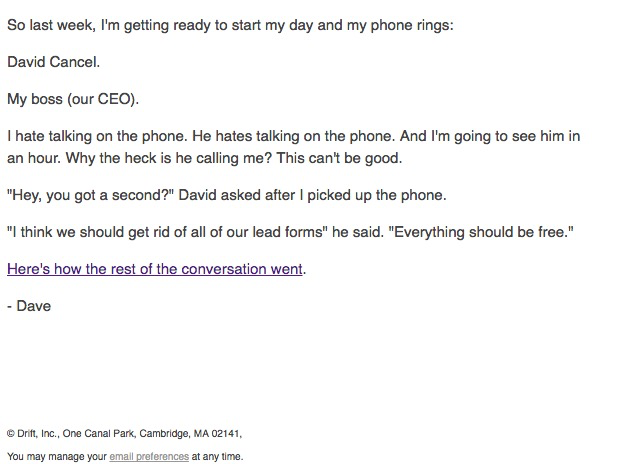
They get over a 40% open rate and 15% click rate by using the be human concept in their email marketing.
Here’s what Dave attributes Drift’s high open and click through rates to:
1. We use a lower case subject line + casual tone. We get a ton of emails back that say ‘they like our stuff because it sounds casual, like an email from a friend.’ Our big marketing thing is to write like a human.
2. Click rate – The biggest mistake people make is trying to jam EVERYTHING into one email. Marketers want you to read the post, share it, read another post, send to a friend, click this, etc. The best results come when we pick ONE CTA and literally only have one link in the email. It forces you to prioritize and means you need to make tradeoffs, but overall is way better.
Great learnings from two completely different businesses that use this strategy.
The End All Be All: Getting Comments On Your Blog
Alright, so now what you’ve all been waiting for… COMMENTS!
Most people measure their blog engagement by the number of comments they receive for each post.
Well to be honest, if you haven’t done the steps above:
- Implement a welcome email or feedback loop
- Engage with people on social media
- Start conversations
- Be Human
Then you’ll likely see little to no blog comments.
Comments are the result of doing those four steps well. In doing those for steps, you start to build a relationship with your readership, your email list becomes a list of engaged fans that want to help and contribute to your success, and your audience uses your comments area to voice their feedback and opinion.
Sometimes in our posts we call out a section for someone to share something in the comments, and yes that does help, but behind it all, the reason we get comments is because we have a two-way relationship with our audience.
That’s it.
How Blog Engagement Fits Into Your Overall Content Marketing Funnel
If you still don’t get why engagement is important to your overall success with content marketing (or marketing in general) then look at it this way:
Traffic > Engagement Events > Full Conversion
Engagement is at the very least an indicator of how much your audience trusts you and values what you do for them. I have yet to see a blog that has little to no engagement that converts customers like crazy, but if I’m wrong, please share some examples that do.
Engagement is a micro conversion event. While comments, likes, shares, etc. might be vanity metrics on the surface, I bet that if you measured the people that actually bought products or services from you via content marketing, that your most highly engaged would be the first to purchase.
If you put two companies next to each other selling the exact same products / services, and one followed the approach outlined above, and one just pushed information onto the consumer, who would you buy from?
The answer:
The one that you have a relationship with. The one that cares about you. The one that helps you.
If you have higher levels of engagement, when it comes down to selling things, you’ll likely be far ahead of the competition.
Want us to write an in depth case study or story like this about you or your company? We’ll also drive traffic to it. Apply here.
Like this article? We produce stories like these for our clients, learn more here.
See our engagement process in action
Optin below and you'll see our welcome email.
We send in depth content marketing articles (like this one) as well as exclusive email-only ideas about once a week. It's free and you can unsubscribe at any time.


